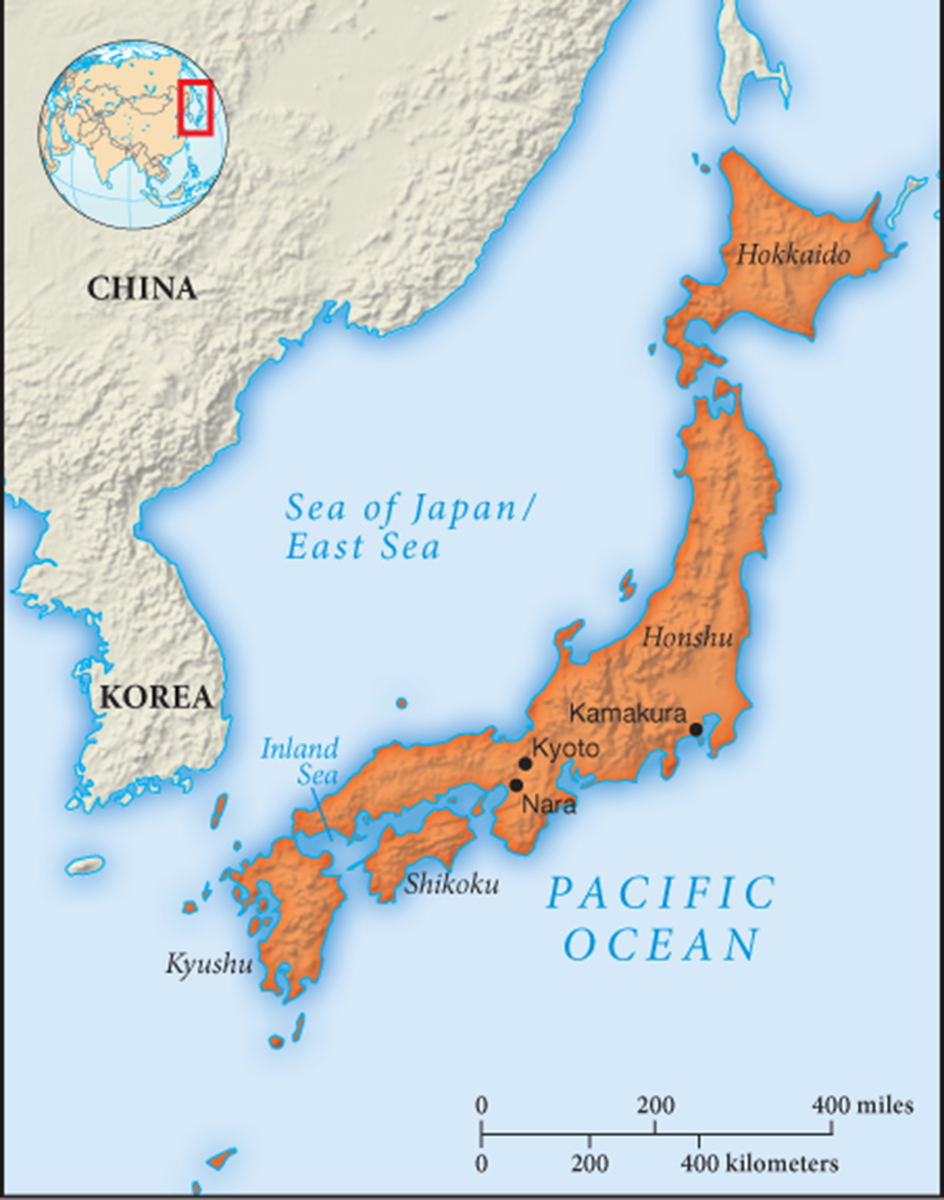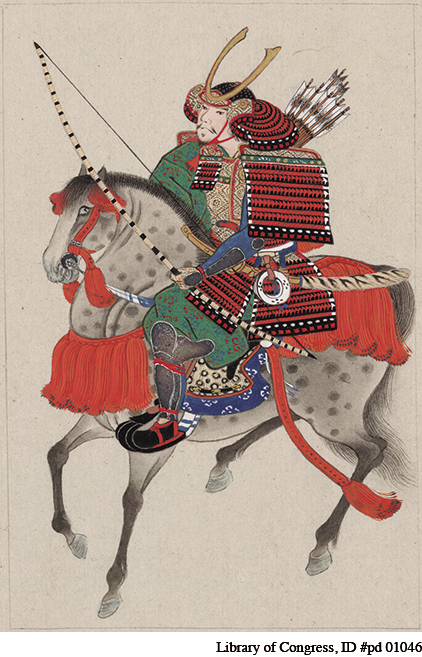Japan and China

Unlike Korea and Vietnam, the Japanese islands were physically separated from China by 100 miles or more of ocean and were never successfully invaded or conquered by their giant mainland neighbor (see Map 8.4). Thus Japan’s very extensive borrowing from Chinese civilization was wholly voluntary, rather than occurring under conditions of direct military threat or outright occupation. The high point of that borrowing took place during the seventh to the ninth centuries C.E., as the first more or less unified Japanese state began to emerge from dozens of small clan-
The initial leader of this effort was Shotoku Taishi (572–
Chinese culture, no less than its political practices, also found favor in Japan. Various schools of Chinese Buddhism took root, first among the educated and literate classes and later more broadly in Japanese society, deeply affecting much of Japanese life. Art, architecture, education, medicine, views of the afterlife, attitudes toward suffering and the impermanence of life—
The absence of any compelling threat from China made it possible for the Japanese to be selective in their borrowing. By the tenth century, deliberate efforts to absorb additional elements of Chinese culture diminished, and formal tribute missions to China stopped, although private traders and Buddhist monks continued to make the difficult journey to the mainland. Over many centuries, the Japanese combined what they had assimilated from China with elements of their own tradition into a distinctive Japanese civilization, which differed from Chinese culture in many ways.

In the political realm, for example, the Japanese never succeeded in creating an effective centralized and bureaucratic state to match that of China. Although the court and the emperor retained an important ceremonial and cultural role, their real political authority over the country gradually diminished in favor of competing aristocratic families, both at court and in the provinces. A Chinese-
As political power became increasingly decentralized, local authorities developed their own military forces, the famous samurai warrior class of Japanese society. Bearing their exquisite curved swords, the samurai developed a distinctive set of values featuring bravery, loyalty, endurance, honor, great skill in martial arts, and a preference for death over surrender. This was bushido (boo-
Comparison
In what different ways did Japanese and Korean women experience the pressures of Confucian orthodoxy?
Religiously as well, Japan remained distinctive. Although Buddhism in many forms took hold in the country, it never completely replaced the native beliefs and practices, which focused attention on numerous kami, sacred spirits associated with human ancestors and various natural phenomena. Much later referred to as Shinto, this tradition provided legitimacy to the imperial family, based on claims of descent from the sun goddess. Because veneration of the kami lacked an elaborate philosophy or ritual, it conflicted very little with Buddhism. In fact, numerous kami were assimilated into Japanese Buddhism as local expressions of Buddhist deities or principles.
Japanese literary and artistic culture likewise evolved in distinctive ways, despite much borrowing from China. As in Korea and Vietnam, there emerged a unique writing system that combined Chinese characters with a series of phonetic symbols. A highly stylized Japanese poetic form, known as tanka, developed early and has remained a favored means of expression ever since. (See Zooming In: Izumi Shikibu for the life of Japan’s best-
At this level of society, Japan’s women, unlike those in Korea, largely escaped the more oppressive features of Chinese Confucian culture, such as the prohibition of remarriage for widows, seclusion within the home, and foot binding. Perhaps this is because the most powerful Chinese influence on Japan occurred during the Tang dynasty, when Chinese elite women enjoyed considerable freedom. Japanese women continued to inherit property; Japanese married couples often lived apart or with the wife’s family; and marriages were made and broken easily. None of this corresponded to Confucian values. When Japanese women did begin to lose status in the twelfth century and later, it had less to do with Confucian pressures than with the rise of a warrior culture. As the personal relationships of samurai warriors to their lords replaced marriage alliances as a political strategy, the influence of women in political life was reduced, but this was an internal Japanese phenomenon, not a reflection of Chinese influence.
Japan’s ability to borrow extensively from China while developing its own distinctive civilization perhaps provided a model for its encounter with the West in the nineteenth century. Then, as before, Japan borrowed selectively from a foreign culture without losing either its political independence or its cultural uniqueness.
SUMMING UP SO FAR
In what different ways did Korea, Vietnam, Japan, and northern nomads experience and respond to Chinese influence?